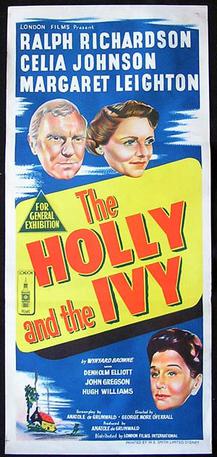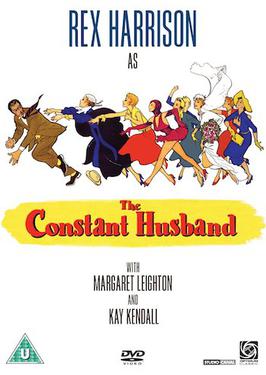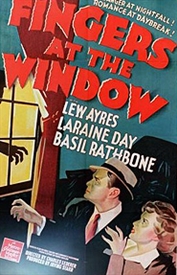The murder of John Alan West on 7 April 1964 was the crime which led to the last death sentences being carried out in the United Kingdom. West, a 53-year-old van driver for a laundry company, was beaten and stabbed to death by Gwynne Evans and Peter Allen, who had gone to rob him at his home in Seaton, Cumberland. Both murderers were unemployed, had a history of petty crime and were arrested and charged within two days of the crime. At trial, each blamed the other, but the jury found both men guilty, and both were sentenced to death.

John Edward Hawkins, CBE was an English actor who worked on stage and in film from the 1930s until the 1970s. One of the most popular British film stars of the 1950s, he was known for his portrayal of military men.
Sidney Gilliat was an English film director, producer and writer.

Green for Danger is a 1946 British thriller film, based on the 1944 detective novel of the same name by Christianna Brand. It was directed by Sidney Gilliat and stars Sally Gray, Trevor Howard, Rosamund John, Leo Genn and Alastair Sim. The film was shot at Pinewood Studios in England. The title is a reference to the colour-coding used on the gas canisters used by anaesthetists.

The Fallen Idol is a 1948 British mystery thriller film directed by Carol Reed, and starring Ralph Richardson, Bobby Henrey, Michèle Morgan, and Denis O'Dea. Its plot follows the young son of a diplomat in London, who comes to suspect that his family's butler, whom he idolises, has committed a murder. It is based on the 1936 short story "The Basement Room", by Graham Greene.

Hell Is a City is a 1960 British crime thriller film starring Stanley Baker, based on the 1954 novel of the same title by Maurice Procter.

Only Two Can Play is a 1962 British comedy film directed by Sidney Gilliat starring Peter Sellers, Mai Zetterling and Virginia Maskell. The screenplay was by Bryan Forbes, based on the 1955 novel That Uncertain Feeling by Kingsley Amis.

The Good Die Young is a 1954 British crime film directed by Lewis Gilbert and starring Laurence Harvey, Gloria Grahame, Joan Collins, Stanley Baker, Richard Basehart and John Ireland. It was made by Remus Films from a screenplay based on the 1953 novel of the same name by Richard Macaulay. It tells the story of four men in London with no criminal past whose marriages and finances are collapsing and, meeting in a pub, are tempted to redeem their situations by a robbery.

Seven Days to Noon is a 1950 British drama/thriller film directed by John and Roy Boulting and starring Barry Jones.

The Green Man is a 1956 black and white British black comedy film based on the play Meet a Body by Frank Launder and Sidney Gilliat, who produced and adapted the big-screen version. Gilliat said the film was "okay".

The Holly and the Ivy is a 1952 British drama film directed by George More O'Ferrall and starring Ralph Richardson, Celia Johnson, and Margaret Leighton. It was adapted from the 1950 play of the same name by Wynyard Browne. Produced by Anatole de Grunwald and co-scripted by Browne and de Grunwald it was distributed by British Lion Films, and released in the United States in 1954 by the independent Pacemaker Pictures. An Irish clergyman whose neglect of his grown offspring, in his zeal to tend to his parishioners, comes to the surface at a Christmas family gathering.

The Constant Husband is a 1955 British comedy film, directed by Sidney Gilliat and starring Rex Harrison, Margaret Leighton, Kay Kendall, Cecil Parker, George Cole and Raymond Huntley. The story was written by Gilliat together with Val Valentine, and the film was produced by Individual Pictures, Gilliat's and Frank Launder's joint production company. Because the film got caught up in the 1954 bankruptcy of British Lion Film Corporation, it was not released until more than seven months after it had been finished and reviewed by the British Board of Film Censors.

Loot is a 1970 British comedy film directed by Silvio Narizzano starring Richard Attenborough, Lee Remick, Hywel Bennett, Milo O'Shea and Roy Holder. It is based on the play of the same name by Joe Orton. It was entered into the 1971 Cannes Film Festival.
Home at Seven is a 1950 British mystery play by R. C. Sherriff. The original production, starring Ralph Richardson, opened at the Theatre Royal, Brighton in February 1950. It transferred to Wyndham's Theatre in the West End on 7 March 1950, for a run of 342 performances. Variety called it "one of the major successes of the legit season."

State Secret is a 1950 British drama thriller film directed by Sidney Gilliat and starring Douglas Fairbanks Jr., Jack Hawkins, Glynis Johns, Olga Lowe and Herbert Lom. It was made at Isleworth Studios with Italian location shooting in Trento and the Dolomites. It was released in the United States under the title The Great Manhunt.

Mr. Denning Drives North is a 1951 British mystery film directed by Anthony Kimmins and starring John Mills, Phyllis Calvert and Sam Wanamaker. Alec Coppel wrote the script, adapted from his own 1950 novel of the same title. An aircraft manufacturer accidentally kills his daughter's boyfriend and tries to dispose of the body.

Seven Sinners is a 1936 British thriller film directed by Albert de Courville and starring Edmund Lowe, Constance Cummings and Felix Aylmer. In the U.S. it was known under this title and also as Doomed Cargo. The screenplay concerns an American detective and his sidekick, who travel from France to England to take on a gang of international criminals.

The Passionate Stranger is a 1957 British drama film, directed by Muriel Box and starring Margaret Leighton and Ralph Richardson. It uses the film within a film device, with the "real" part of the plot shot in black-and-white and the "fictional" element in colour. The interior scenes were shot at Shepperton Studios, with location filming taking place at Chilworth, Surrey.

Fingers at the Window is a 1942 mystery film directed by Charles Lederer and released by Metro-Goldwyn-Mayer.
The trial of Mary Fitzpatrick of November 1882, before Justice Henry Hawkins, was an English murder and robbery case at the York Winter Assizes in the assize courts at York Castle, which drew much attention in contemporary newspapers. It followed the death of 24-year-old glass blower James Richardson, who was last seen alive in the company of rag sorter Mary Fitzpatrick, aged 23, and was next seen dead in the water without his watch and chain. The Coroner's Court returned a verdict of "wilful murder."















